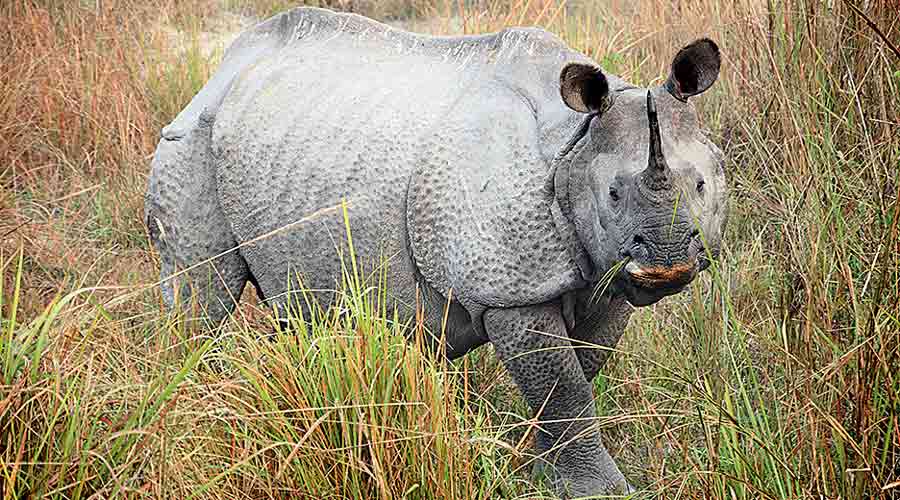The census of the one-horned rhino started at the Jaldapara National Park in Alipurduar from Friday. A similar exercise would be taken up at the Gorumara National Park in Jalpaiguri on Monday and Tuesday.
These two national parks are the only habitats for rhinos in Bengal. The last rhino census was done in 2019.
According to forest sources the census will be done on the basis of “direct sighting”.
The staffs, members of non-government organisations and also those from the joint forest management committees were recently trained on various aspects of the census.
The two national parks have been divided into 55 enumeration blocks.
Rajendra Jhakar, chief conservator of forest (wildlife, north) said: “In 2019, the number of rhino was estimated to be between 231 and 237 at Jaldapara and more than 50 in Gorumara.”
According to sources, the first rhino census at Jaldapara was conducted in 1966 and records showed that there were at least 75 rhinos in the national park.
While the number had risen to 80 in 1969, alarm bells rang when the number dwindled to 14 during the 1985 census.
Officials said that following this decline in rhino population, the department increased vigilance across the 116sqkm sanctuary and organised several drives in the forest villages to check poaching.
“To provide more space for the animals, the department also extended the area of the sanctuary by including some parts of Kodal Basti and Chilapata range, which were adjoining areas to the park,” said an official.
According to forests, apart from Jaldapara and Gorumara National Park, a third rhino habitat is also being developed on the banks of Torsa river at Rashomati in Cooch Behar district.
“We will soon release two male rhinos and a female rhino at Rashomati in Cooch Behar, where the third rhino habitat is being developed,” said an officer.











